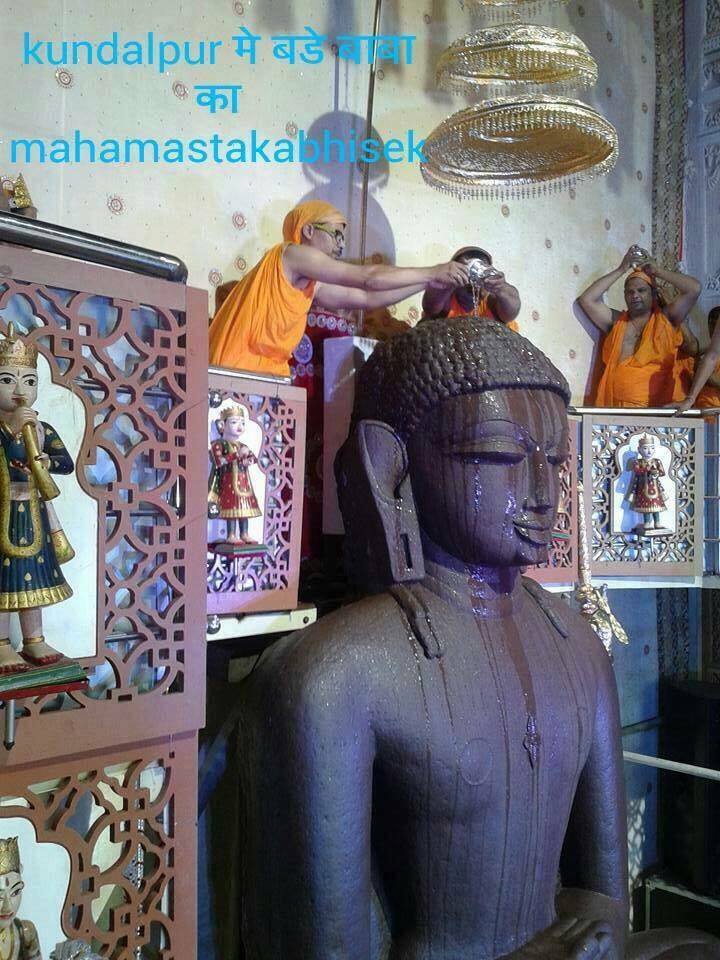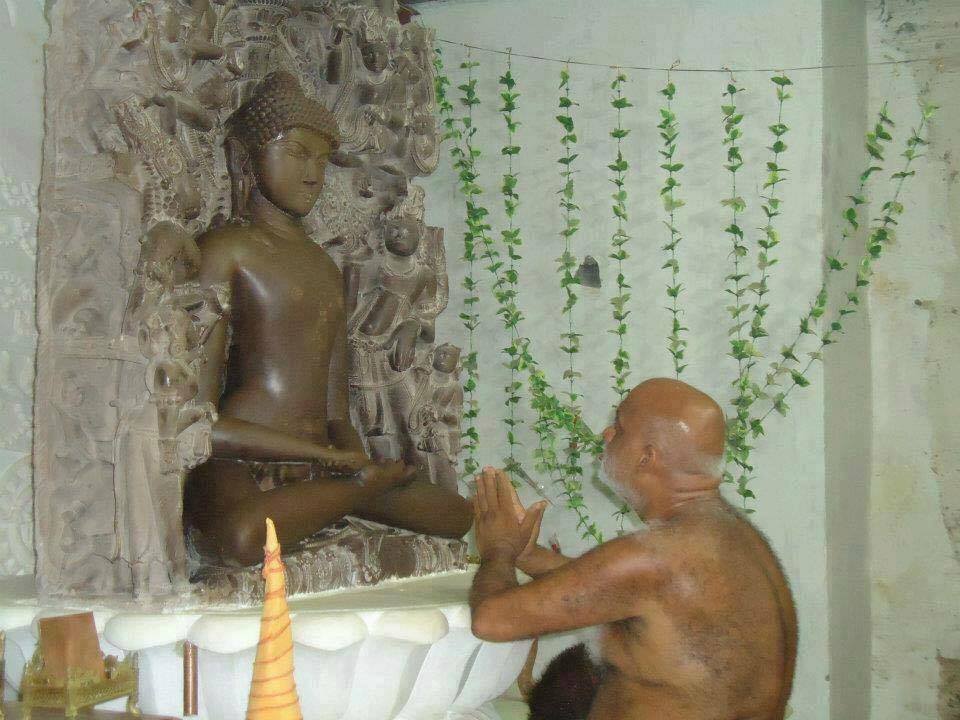Update
Jainism = Compassion = Religion
If there is no compassion towards all living beings then there cannot be any religion. Compassion is the essence of all religions. How do you feel when someone hurts you? Do you like it? Of course, you don't.
Now, think about how others feel if we hurt them. Do they feel good? Naturally, they will feel bad.
Lord Mahavira said you should not say or do anything to others that you would not like to have done to you. Everybody in this world wants to be happy. No one likes to be hurt.
The message of Lord Mahavira is that we should love everybody and should not hurt anybody. We should try to help others and make them happy. To understand the pain and unhappiness that others are experiencing is compassion. The same is true about nonviolence (Ahimsa). Compassion is one of the main pillars of the Jain Religion, and that is why Jainism is sometimes called a compassionate religion.
Ahimsa (nonviolence) has been given the most importance in Jainism. Lord Mahavira became Arihanta (to know more about Arihanta, refer post no # 38) by adopting supreme compassion in his life. His compassion seems to have reached the climax. He was tortured by many and even then not only he forgave them but he felt compassionate towards them.
Compassionate people are rewarded by acquiring other virtues. Jainism is based on compassion to all the living beings. Jainism emphasizes observance of verbal and mental compassion also. We should be compassionate and friendly towards all and should have no enmity for any one.
 Source: © Facebook
Source: © Facebook
Update
Navakära Mantra and Pancha-Paramesthi (The five supreme spiritual souls)
Namo Arihantänam: I bow down to Arihanta,
Namo Siddhänam: I bow down to Siddha,
Namo Äyariyänam: I bow down to Ächärya,
Namo Uvajjhäyänam: I bow down to Upädhyäya,
Namo Loe Savva-Sähunam: I bow down to all Sädhus of this world.
The Navakära Mantra is the most important mantra in Jainism and can be recited at any time. While reciting the Navakära Mantra, we bow down to Arihanta (souls who have reached the state of non-attachment towards worldly matters), Siddhas (liberated souls), Ächäryas (heads of Sädhus and Sädhvis), Upädhyäys (those who teach scriptures and Jain principles to the followers), and all Sädhus (monks, who have voluntarily given up social, economical and family relationships). Together, they are called Pancha Paramesthi (The five supreme spiritual souls). In this Mantra we worship their virtues rather than worshipping any one particular entity; therefore, the Mantra is not named after Lord Mahävira, Lord Pärshva Nätha or Lord Ädi-Nätha, etc. When we recite Navakära Mantra, it also reminds us that, we need to be like them. This mantra is also called Namaskära or Namokära Mantra because in this Mantra we offer Namaskära (bowing down) to these five supreme group beings. Recitation of the Navakära Mantra creates positive vibrations around us, and repels negative ones. The Navakära Mantra contains the foremost message of Jainism. The message is very clear. If we want to be liberated from the cycle of life and death, we need to renounce worldly affairs by becoming a monk or a nun. This is just the beginning. If we stay on the right path, we will progress to a higher spiritual state, Kevali or Arihanta, and ultimately proceed to become Siddha after nirvana (liberation from the cycle of birth and death). The goal of every soul is to become a Siddha. (we will talk more, about Navakära Mantra in future posts).
# PANCH-PARAMESTHI (The five supreme spiritual souls) are following:
1) ARIHANTAS:
The word Arihanta is made up of two words: 1) Ari means enemies, and 2) Hanta means destroyer. Therefore, Arihanta means a destroyer of enemies. The enemies referred to here are internal: inner desires and passions. The passions include anger, ego, deceit, and greed. Until we eliminate these passions, the real nature or the power of our soul will not be realized or manifested. When a person (soul) wins over these inner enemies he is called a Kevali (omniscient) and Jina (victor).
This state of not having passions and omniscience is manifested when that person has completely destroyed the four-Ghäti karmas (destructive) namely:
a) Jnänävaraniya (knowledge obscuring) Karma
b) Darshanävaraniya (perception obscuring) Karma
c) Mohaniya (deluding) Karma
d) Antaräya (obstructing) Karma
These karmas are called Ghäti (destructive) karmas because they directly affect the true nature of the soul. When these Karmas are destroyed, a person attains the following four infinite qualities (Anant Chatushtaya) and is called a Kevali.
a) Kevaljnän (Anant Jnän) - Perfect knowledge due to the destruction of all Jnänävaraniya Karmas.
b) Keval-Darshan (Anant Darshan) - Perfect perception due to the destruction of all Darshanävaraniya karmas.
c) Anant Chäritra - Passionless state due to the destruction of all Mohaniya Karmas.
d) Anant Virya - Infinite energy due to the destruction of all Antaräya Karmas.
2) SIDDHAS:
Siddhas are liberated souls. They are no longer among us because they have completely ended the cycle of birth and death. They have reached the ultimate highest state, the state of liberation. They do not have any karmas, and they do not collect any new karmas. This state of true freedom is called Nirvana/Moksha. By destroying all 8 types of karmas (for more detail about 8 types of Karma, refer post no #28) Siddhas acquire 8 unique attributes. They are as follows:
a) Anant Jnän (Infinite knowledge)
b) Anant Darshan (Infinite perception)
c) Avyäbädha Sukha (Eternal happiness)
d) Ananta Chäritra (Perfect conduct)
e) Akshaya Sthiti (Immortality)
f) Arupitva (Formlessness)
g) Aguru Laghutva (No Status, Neither heavy or light)
h) Ananta Virya (Infinite energy)
3) ÄCHARYAS:
The teachings of Lord Mahävir, the last Tirthankar, is carried on by the Ächäryas. They are our spiritual leaders. The responsibility of spiritual (not social or economical) welfare of the entire Jain community rests on the shoulders of the Ächäryas. Before reaching this state, one has to do an in depth study and achieve mastery of the Jain scriptures (Ägamas). In addition to acquiring a high level of spiritual excellence, they have the ability to lead the congregation of monks, nuns and laypeople. Generally, they have the knowledge of various languages and other philosophies and religions of the world. Ächärya is the head of the Jain congregation. They possess the 36 attributes called Moolguna (we will talk about this in future posts).
4) UPADHYAYAS:
This title is given to those Sädhus (Monks) who have acquired complete knowledge of the Jain scriptures (Ägamas) and philosophical systems. They teach Jain scriptures to other ascetics and laypeople. Upädhyäyas possess 25 attributes called Moolguna (we will talk about this in future posts).
5) SADHUS:
When householders desire to detach from the worldly aspects of life and gain a desire for spiritual uplift, they renounce worldly lives and become Sädhus (monk) or Sädhvis (nun). A male person is called Sädhu, and a female person is called Sädhvi. Before becoming Sädhu or Sädhvi, a lay person must stay with Sädhus or Sädhvis to understand their life style and do religious studies for several months. When they feel confident that they will be able to live the life of a monk or a nun, they inform the Ächärya that they are ready for initiation. If the Ächärya is convinced that they are ready and are capable of following the vows of Sädhu or Sädhvi, he prepares them for Dikshä. Dikshä is an initiation ceremony, following, which a householder becomes a monk or a nun. Sadhus possess 28 attributes called Moolguna.
--- www.jinvaani.org @ Jainism' e-Storehouse ---
#Jainism #Jain #Digambara #Nirgrantha #Tirthankara #Adinatha #LordMahavira #MahavirBhagwan #RishabhaDev #Ahinsa #Nonviolence
 Source: © Facebook
Source: © Facebook
News in Hindi
सुबह का भूला शाम को वापस आ जाये तो उसे भूला नहीं कहते -आचार्य श्री विद्यासागर जी #AcharyaVidyasagar #todayPravachan
आचार्य श्री विद्यासागर महाराज जी ने एक दृष्टांत के माध्यम से बताया की एक पिता अपने बेटे को सही राह (धर्म मार्ग) बताता है परन्तु बेटे को पिता की बात कम समझ में आती है वह केवल अपनी इक्षाओं की पूर्ति हेतू प्रयत्न करता है और उसमे सफलता भी प्राप्त करता है | जब उसके पास उसकी इक्षा अनुरूप सभी साधन और सुविधाएँ उपलब्ध हो जाती है तो वह बैठा सोचता है की उसके पास आज सभी चीजें जो वो अपनी ज़िन्दगी में चाहता है उसके पास उपलब्ध है किन्तु मन मान नहीं रहा है तब उसे अपने पिता की बात याद आती है और वह अगले दिन देश वापस आता है और अपने देश की मिट्टी को माथे से लगता है और फिर अपने पिता से मिलता है | पिता उसे देखकर खुश हो जाते हैं और एक पिता अपने बेटे के कार्यानुसार उसके भविष्य को अच्छी तरह जानता है | उन्हें मालूम था की एक दिन उनका बेटा सही राह (धर्म की राह) पर जरुर आएगा | यहाँ पर एक वाक्य चरितार्थ होता है की ‘’सुबह का भूला शाम को लौट आये तो उसे भूला नहीं कहते’’ | आज चंद्रगिरी में भी जगदलपुर से आप लोग देव बनकर आयें है हमें यह देखकर प्रसन्नता हुई की आप लोग अपनी मातृभूमि से जुड़े हुए हैं | प्रत्येक व्यक्ति को अपनी मातृभूमि से हमेशा जुड़े रहना चाहिये जिससे की उसके संस्कार हमेशा बने रहे | जगदलपुर में पंचकल्याणक की भूमिका डोंगरगांव में मात्र एक दिन में बनी थी यह वहाँ के लोगों का पुण्य है और उनका प्रयास भी सराहनीय है जो इतना बड़ा कार्य कर रहे हैं | जगदलपुर एक आदिवासी इलाका है वहाँ जिन मंदिर होना अपने आप में एक अलग बात है इससे वहाँ के आस - पास के लोग भी जुड़ सकेंगे जैसे कोंडागांव, गीदम आदि | यह एक आदिवाशी बहुल क्षेत्र प्रकृति की गोद में है जो की अपने आप में एक प्राकृतिक सुन्दरता धारण किये हुए है, यह जानकारी चंद्रगिरि डोंगरगढ़ से निशांत जैन (निशु) ने दी है।
 Source: © Facebook
Source: © Facebook
